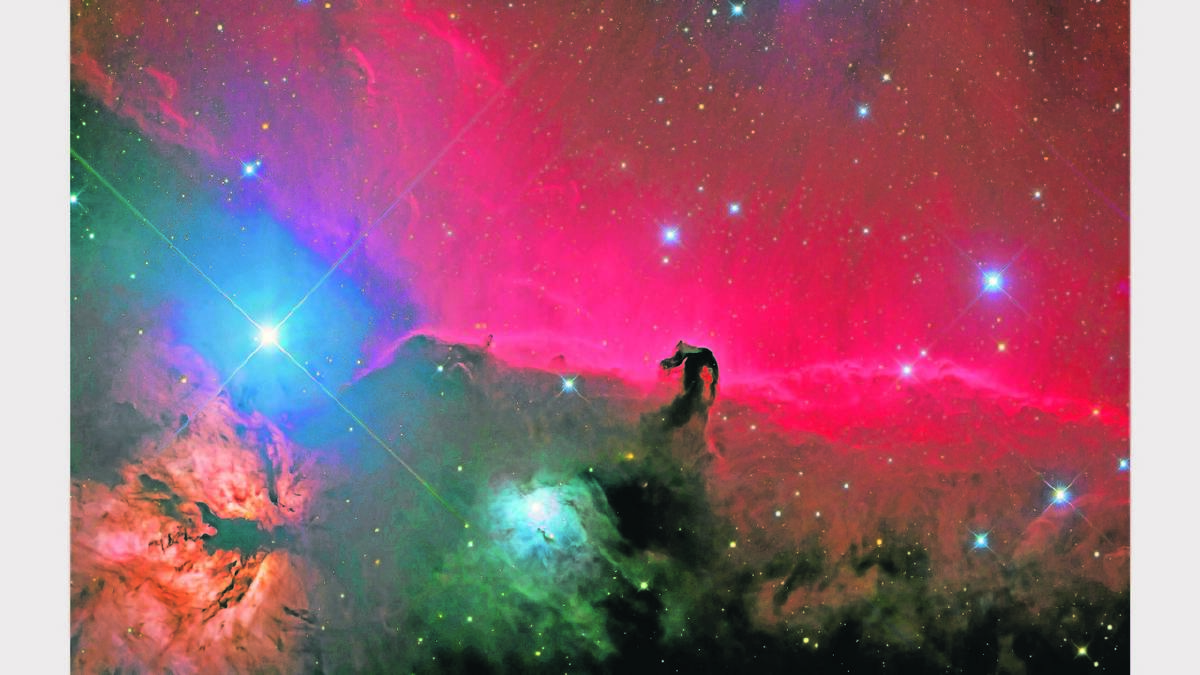



The widely observed fireball that streaked through the Central West night skies last week is a good example of how astronomy so easily captures the imagination of people.
Subscribe now for unlimited access.
$0/
(min cost $0)
or signup to continue reading
Since February 2002, the Central West Astronomical Society (CWAS) has provided an avenue for amateur astronomers and members of the public to admire and learn more about the amazing night sky.
Then in July 2004, the CWAS took this a step further by introducing the annual CWAS Festival of Astronomy (or AstroFest) to bring together amateur and professional astronomers as well as members of the public from all over Australia and even internationally.
A crucial part of AstroFest has always been the annual CWAS David Malin Astrophotography Awards.
Judges by the world-renowned pioneering astrophotographer, Dr David Malin, it is no idle claim to say that these awards almost immediately became arguably the most prestigious and sought after astrophotography awards in Australia.
The beautiful works of art that win the 2014 awards will go on to appear in science textbooks, coffee table books, calendars and so forth over the next year or so.
This year’s AstroFest will be held this weekend Saturday, July 19, and Sunday, July 20, with the theme of “Celebrating Australian Astronomical Achievement” to recognise Australia’s long and proud history of international astronomy.
Not only have indigenous Australians been studying the night skies for 10s of 1000s of years but astronomy has played an important part in our more recent history, going right back to Captain Cook as well as the First Fleet.
Indeed, to celebrate the 10th anniversary of its annual AstroFest, the CWAS is waiving the normal registration fee (although a small fee of $5 for optional lunch still applies).
The various events and talks are always presented in an easy to understand manner so you can be certain to go home learning something new and fascinating about our spectacular Universe.
The following is a summary of the various events that people can look forward to following registration this Saturday from 9am at the Coventry Room in the Parkes Shire Library and Cultural Centre:
* “Nightscape Photography”, a look at taking photos of landscapes and the sky at night, by Mike Salway, founder of the popular Ice-in-Space astrophotography website;
* “Honeysuckle Creek and Apollo”, with Colin Mackellar explaining how Australia brought the images of the Apollo Moon landings to the world;
* “Australian Astronomy Offshore”, with Dr Stuart Ryder of the Australian Astronomical and Gemini Observatories, looking at Australia’s ongoing crucial contributions to astronomy around the world;
* A civic reception in the Coventry Room hosted by Parkes Shire Mayor, Councillor Ken Keith;
* The keynote John Bolton Lecture is a prestigious presentation given each year in memory of Dr John Bolton, world-leading radio astronomer and first director of the Parkes Radio Telescope.
This year’s John Bolton Lecture, “The AAO at 40 Years: Looking Back to Looking Forward” by Professor Warrick Couch, Director of the Australian Astronomical Observatory (AAO) promises to be a fascinating look at the work done by the famous Coonabarabran observatory throughout its 40 year history.
The AstroFest continues at the Parkes Radio Telescope (The Dish) this Sunday from 9am with:
* Daytime astronomy (weather permitting, and using special safety equipment by experienced amateur astronomers);
* Official opening of the 2014 CWAS David Malin Astrophotography Awards in the Bowen Room of the Parkes Radio Telescope Visitor Centre;
* “The Truth Behind The Dish”, with our own John Sarkissian explaining whether they really played cricket on the Dish, whether a pie warmer really caused The Dish to lose Apollo 11 and whether high winds really jeopardised the Parkes Radio Telescope receiving television signals from the Apollo 11 astronauts on the Moon.
So why not go along to the Coventry Room near the Parkes Shire Library on Saturday or the Parkes Radio Telescope Visitors Centre on Sunday to learn more about our night sky and admire some of Australia’s best photographs of the heavens.
Although admission to all events is free, registration is advised to ensure adequate catering.
Further information and registration details of the 2014 CWAS AstroFest can be found at www.cwas.org.au/astrofest.

